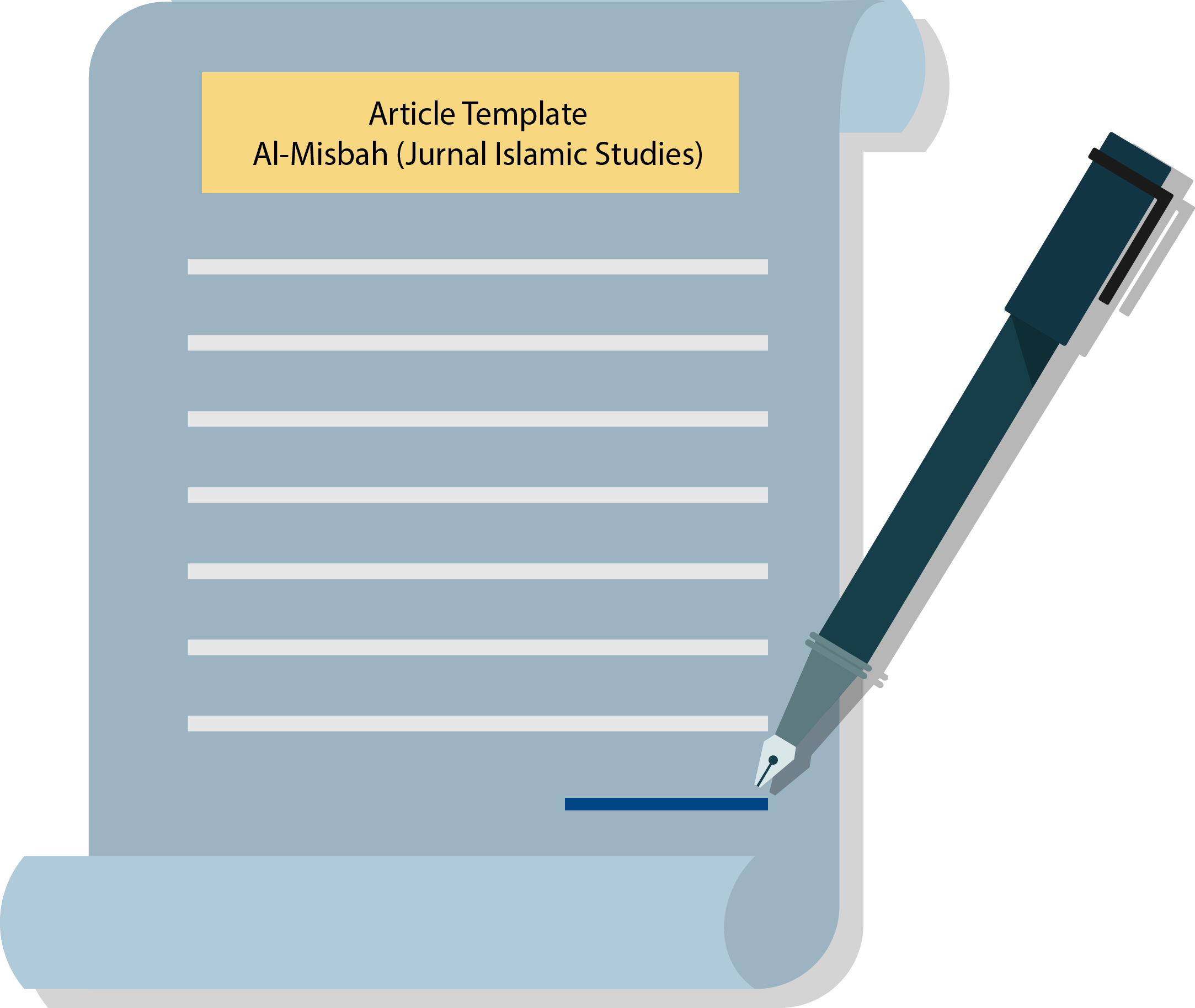Innovative Learning Strategies and Methods to Overcome Difficulties in Reading the Qur'an
DOI:
https://doi.org/10.26555/almisbah.v9i2.3908Keywords:
Strategy, Method , Innovative , Al-Qur’anAbstract
Ideally, for junior high school, students can read the Qur'an even though the reading is still haltingly. However, reading the Qur'an is one of the severe problems faced by junior high schools that exist today. One of them is at SMP Muhammadiyah 1 Kalasan. Most of the students have not been able to read the Qur'an, even though SMP Muhammadiyah 1 Kalasan is one of the schools that is integrated with the Tahfidz PCM Kalasan House. As the landscape spearhead, teachers must have various strategies and methods to overcome these problems. So that the main program of the school to become a school that prints hafidz Al-Qur'an can be realized as well as possible. A good strategy and method will support the success of overcoming difficulties in reading the Qur'an. The purpose of this study was to find out strategies and innovative learning methods to overcome difficulties in reading the Qur'an at SMP Muhammadiyah 1 Kalasan. This study uses a qualitative research method using a descriptive approach. The data in this study using interviews, observation, and documentation. The results of this study are related to innovative learning strategies and methods to overcome difficulties in reading the Qur'an, including drill method/spelling practice, peer tutoring method, active learning strategy, and one-day one-page iqro' strategy. These strategies and methods are used step by step, starting from the initial to the final stage with a link system.
References
Anggraeni, N. E. (2019). STRATEGI PEMBELAJARAN DENGAN MODEL PENDEKATAN PADA PESERTA DIDIK AGAR TERCAPAINYA TUJUAN PENDIDIKAN DI ERA GLOBALISASI. ScienceEdu, 72. https://doi.org/10.19184/se.v2i1.11796
Anshori. (2013). Ulumul Qur’an. Rajawali Pers.
Asiah, N. (2017). ANALISIS KEMAMPUAN PRAKTIK STRATEGI PEMBELAJARAN AKTIF (ACTIVE LEARNING) MAHASISWA PGMI FAKULTAS TARBIYAH DAN KEGURUAN IAIN RADEN INTAN LAMPUNG. TERAMPIL Jurnal Pendidikan Dan Pembelajaran Dasar, 4(1), 2017. https://doi.org/https://doi.org/10.24042/terampil.v4i1.1803
Chalis, N. (2019). STRATEGI PEMBELAJARAN AL-QURAN DI MA’HAD AL-JAMI’AH UIN AR-RANIRY BANDA ACEH. EDUKASI: Jurnal Penelitian Pendidikan Agama Dan Keagamaan. https://doi.org/10.32729/edukasi.v17i1.531
Falah, irfan fajrul. (2014). MODEL PEMBELAJARAN TUTORIAL SEBAYA: TELAAH TEORITIK. Jurnal Pendidikan Agama Islam -Ta’lim Vol. 12 No. 2 - 2014, 12(2).
Fatimah, F., & Kartikasari, R. D. (2018). STRATEGI BELAJAR DAN PEMBELAJARAN DALAM MENINGKATKAN KETERAMPILAN BAHASA. Pena Literasi, 1(2), 108. https://doi.org/10.24853/pl.1.2.108-113
Hamruni. (2012). Strategi dan Model-model Pembelajaran Aktif dan Menyenangkan. Insan Madani.
Hasbullah, Juhji, A. M. (2019). Strategi Belajar Mengajar Dalam Upaya Islam. Journal Prndidikan Agama Islam Edureligia.
Hisyam, Z. dkk. (2008). Strategi Pembelajaran Aktif. Pustaka Insan Madani.
Ilyas, Y. (2017). Kuliah Ulumul Qur’an. ITQAN Publishing.
Indriani, A. M. F., & Mutmainnah, S. (2016). METODE PEMBELAJARAN TUTOR SEBAYA SEBAGAI UPAYA MENINGKATKAN HASIL BELAJAR SISWA. Journal of Accounting and Business Education, 2(2). https://doi.org/10.26675/jabe.v2i2.6057
Kariadi, D., & Suprapto, W. (2018). Model Pembelajaran Active Learning Dengan Strategi Pengajuan Pertanyaan untuk Meningkatkan Kualitas Proses Pembelajaran PKn. Educatio, 13(1). https://doi.org/10.29408/edc.v12i1.838
Majid, A. (2014). Strategi Pembelajaran. PT. Remaja Rosdakarya.
Ngadiran. (2015). Kerja Kelompok sebagai Strategi/Metode Belajar Pengajar. Jurnal Cakrawala Pendidikan, 1(1). https://doi.org/10.21831/cp.v1i1.7365
Nurhayati, N. (2019). PENGARUH PENERAPAN STRATEGI PEMBELAJARAN KOOPERATIF STUDENT TEAM ACHIEVEMENT DIVISION DAN AKTIVITAS BELAJAR TERHADAP HASIL BELAJAR AL-QUR’AN HADITS SISWA MADRASAH TSANAWIYAH NEGERI 3 SIMALUNGUN. ANSIRU PAI : Pengembangan Profesi Guru Pendidikan Agama Islam. https://doi.org/10.30821/ansiru.v3i1.5488
Prajakusuma, M., Kurniah, N., & D, D. (2016). Penerapan Metode Latihan (DRILL) Berbantuan Audio Visual untuk Meningkatkan Ketepatan Gerakan Shalat. Journal of Chemical Information and Modeling.
Purwadhi. (2019). Pembelajaran Inovatif dalam Pembentukan Karakter Siswa. Mimbar Pendidikan, 4 No. 1, 21–34. https://doi.org/https://doi.org/10.17509/mimbardik.v4i1.16968
Rusman, dkk. (2012). Pembelajaran Berbasis Teknologi Informasi dan Komunikasi. PT. Raja Grafindo Persada.
Sa’diyah, H. (2019). Strategi Pembelajaran Bahasa Arab Penuh Inovasi dan kontemporer. Nusantara Global Press.
Sanjaya, W. (2016). Strategi Pembelajaran Berorientasi Standar Proses Pendidikan. Pranadamedia Group.
Silberman, M. L. (2009). Active Learning 101 Cara Belajar Siswa Aktif. Nuansa.
Suciati. (2007). Belajar dan Pembelajaran. Perum Balai Pustaka.
Sudrajat, A. (2011). Kurikulum Dan Pembelajaran Paradikma Baru. Pramita.
Sugiyono. (2014). Metode Penelitian Pendidikan (Pendekatan Kuantitatif, Kualitatif, dan R&D). Alfabeta.
Susilo, A., & Sarkowi, S. (2018). Peran Guru Sejarah Abad 21 dalam Menghadapi Tantangan Arus Globalisasi. Historia: Jurnal Pendidik Dan Peneliti Sejarah. https://doi.org/10.17509/historia.v2i1.11206
Susilowati, E., Santoso, S., & Hamidi, N. (2013). Penggunaan Metode Pembelajaran Drill Sebagai Upaya Meningkatkan Prestasi Belajar Akuntansi. Jupe UNS.
Tambak, S. (2016). Metode Drill dalam Pembelajaran Pendidikan Agama Islam. Al-Hikmah: Jurnal Agama Dan Ilmu Pengetahuan, 13(2). https://doi.org/10.25299/al-hikmah:jaip.2016.vol13(2).1517
Yamin, M. (2012). Desain Baru Pembelajaran Konstruktivistik. Ciputat Mega Mall.
Downloads
Published
How to Cite
Issue
Section
License
Copyright (c) 2021 Muh. Alif Kurniawan

This work is licensed under a Creative Commons Attribution-ShareAlike 4.0 International License.
Authors who publish with Al-Misbah agree to the following terms:
- Authors retain copyright and grant the journal right of first publication with the work simultaneously licensed under a Creative Commons Attribution License (CC BY-SA 4.0) that allows others to share the work with an acknowledgment of the work's authorship and initial publication in this journal.
- Authors are able to enter into separate, additional contractual arrangements for the non-exclusive distribution of the journal's published version of the work (e.g., post it to an institutional repository or publish it in a book), with an acknowledgment of its initial publication in this journal.
- Authors are permitted and encouraged to post their work online (e.g., in institutional repositories or on their website) prior to and during the submission process, as it can lead to productive exchanges, as well as earlier and greater citation of published work.

This work is licensed under a Creative Commons Attribution-ShareAlike 4.0 International License.



